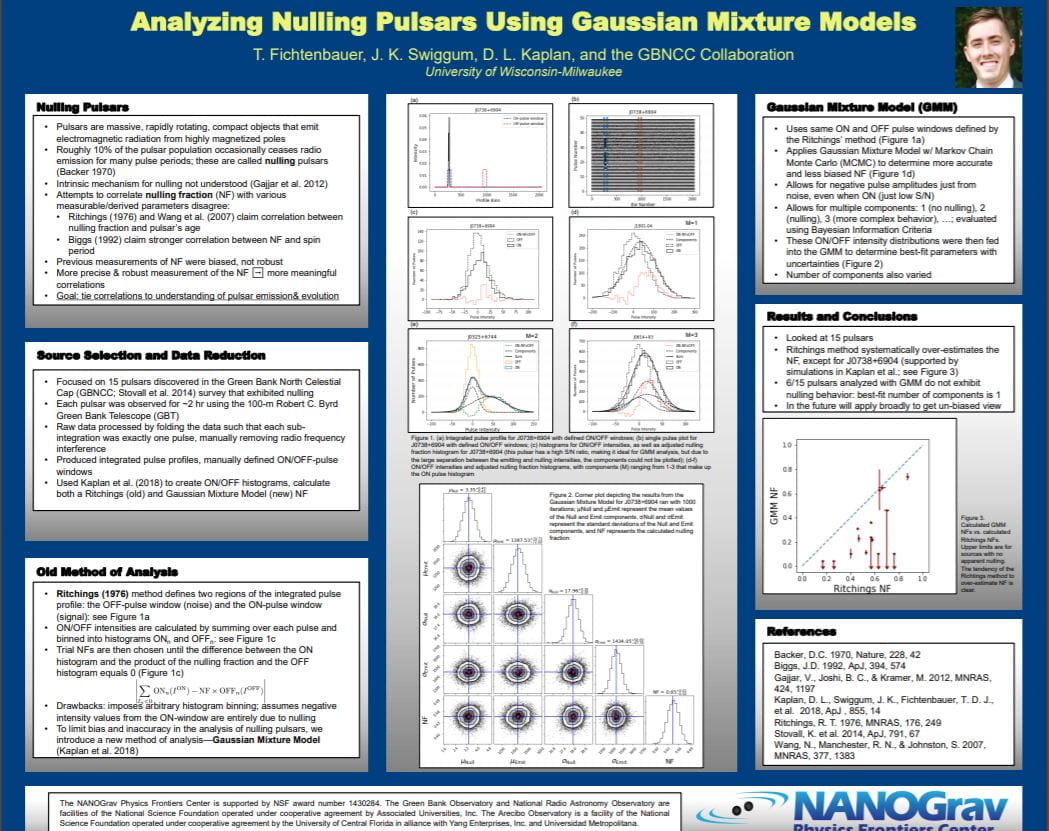Travis Fichtenbauer, “Analyzing Nulling Pulsars Using Gaussian Mixture Models”
Mentors: Joseph Swiggum & David Kaplan, Physics
Pulsars are rapidly rotating neutron stars that emit radiation from their magnetic poles. A small portion of the pulsar population is known to occasionally cease radio emission for periods of time; these are called nulling pulsars. The study of nulling pulsars allows us to better understand the emission mechanism of pulsars and how pulsars “die.” Observations for this project were made using the world’s largest steerable radio telescope – the Green Bank Telescope. We proposed confirmation observations of 15 nulling pulsar candidates, sources originally discovered in the Green Bank North Celestial Cap (GBNCC) survey, and we have conducted observations for all of them. Until now, techniques used to estimate the nulling fraction (fraction of time pulsar spends in a null state) were biased, so we employed a new method using Gaussian mixture models to better estimate nulling fractions and characterize the nulling behavior of several recently-discovered pulsars. Our results indicate that the previous method of analysis systematically overestimated the nulling fraction by amounts that range from 10 to 57 percent.
Click the thumbnail below to open the full sized poster in a new tab.

The research is quiet good and has a good understanding of the work done and the reason behind the direction taken. However, relating the research to the people’s lives and simplifying for those out of the field is quite needed. A presentation or a couple of lines in the introduction could have helped with that. Finally, some figures were missing the reference to (Figure 1e and 1f) or not clearly interpreted (Figure 2).
Good work, and keep it up!